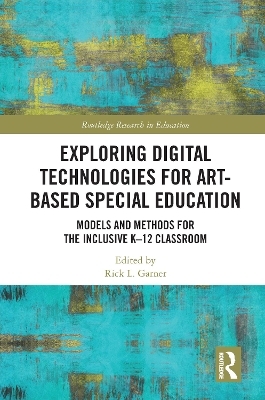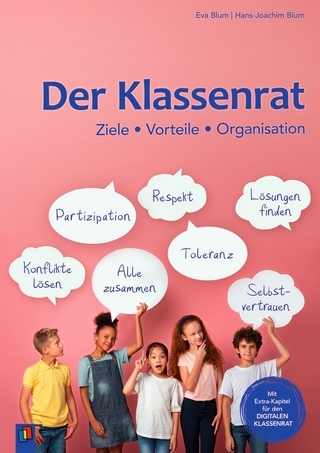
Exploring Digital Technologies for Art-Based Special Education
Routledge (Verlag)
978-1-138-47866-4 (ISBN)
Rick Garner is a professor of Art Education at Kennesaw State University, USA.
Introduction
Section I: Philosophical Underpinnings and Applications of Digital Arts Media
Chapter 1: Decentering Normal
Karen Keifer-Boyd & Aaron D. Knochel
Chapter 2: From Who I Am to All We Can Be
Michelle Tillander
Chapter 3: Froebel Facebook, Mobile Montessori, Virtual Reality Reggio, and Web Waldorf: Digital Resources, Art Education Philosophies, and Inclusive Teaching
Courtney Lee Weida
Section II: Expanded Curriculum and Accessibility for Special Needs
Chapter 4: The Educational Implications of Godzilla, Ghosts, and Aliens: Using iPad Animation to Extend Learning Digitally and Expand the Curriculum
Tricia Fuglestad
Chapter 5: Hand and Digital Making for All: Where Creative Learning Happens
Sohee Koo & Rick L. Garner
Chapter 6: Museum for Everyone: Experiments and Probabilities in Telepresence Robots
Eunjung Chang
Section III: Flipped Digital Classrooms for Special Needs
Chapter 7: Art Education: Utilizing Technology to Meet the Needs of All
Rebecca K. Hitchcock
Chapter 8: Exploring the Possibilities and Effectiveness of Flipped Classroom
Tingting Windy Wang & Rick L. Garner
Section IV: Virtual Worlds/Augmented Realities for Addressing Disabilities
Chapter 9: Precious and Fragile Things: Students’ Digital Stories about Virtual Ability/Disability Art on Virtual Worlds
Mary Stokrocki
Chapter 10: Visual culture verses Virtual Culture: When Visual Culture is Created by Virtual World Users
Hsiao-Cheng (Sandrine) Han & Rick Garner
Chapter 11: The Crayon Doesn’t Do That: Early Childhood and Advanced Technology
Sean Justice & Marta Cabral, with Kate Gugliotta
Section V: Video and Digital Imagery for Self-Exploration
Chapter 12: Video Modelling in the Art Classroom: Enhancing the Learning of Students with Autism Spectrum Disorder
Anthony Woodruff
Chapter 13: Vlogging for Pancakes: Using Technology to Practice Understanding Ourselves as Learners
Stephanie Baer
Chapter 14: Exploring Empathy and Attention through Illusions with Middle Level Students
Christopher Grodoski
Chapter 15: Transmedia Motivates and Enriches Learning of Underserved Students
Rick L. Garner & Christian Brown
| Erscheinungsdatum | 28.03.2019 |
|---|---|
| Reihe/Serie | Routledge Research in Education |
| Zusatzinfo | 3 Line drawings, black and white; 38 Halftones, black and white; 41 Illustrations, black and white |
| Verlagsort | London |
| Sprache | englisch |
| Maße | 152 x 229 mm |
| Gewicht | 453 g |
| Themenwelt | Sozialwissenschaften ► Pädagogik ► Schulpädagogik / Sekundarstufe I+II |
| Sozialwissenschaften ► Pädagogik ► Sonder-, Heil- und Förderpädagogik | |
| ISBN-10 | 1-138-47866-0 / 1138478660 |
| ISBN-13 | 978-1-138-47866-4 / 9781138478664 |
| Zustand | Neuware |
| Haben Sie eine Frage zum Produkt? |
aus dem Bereich


